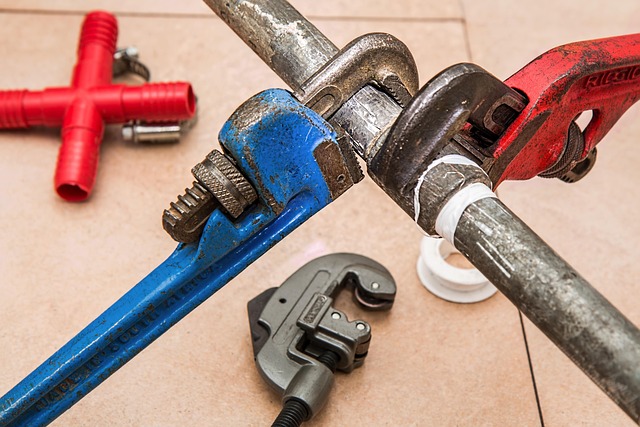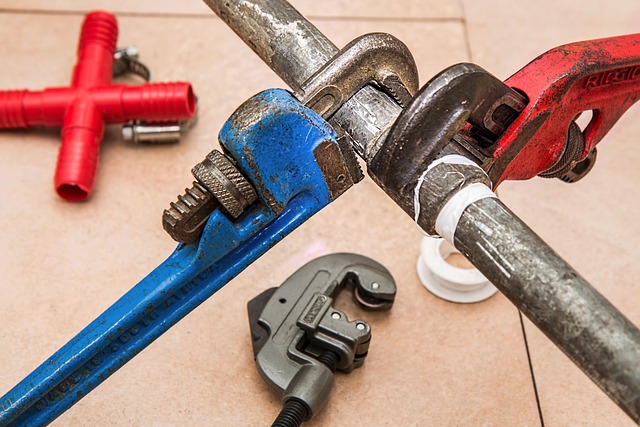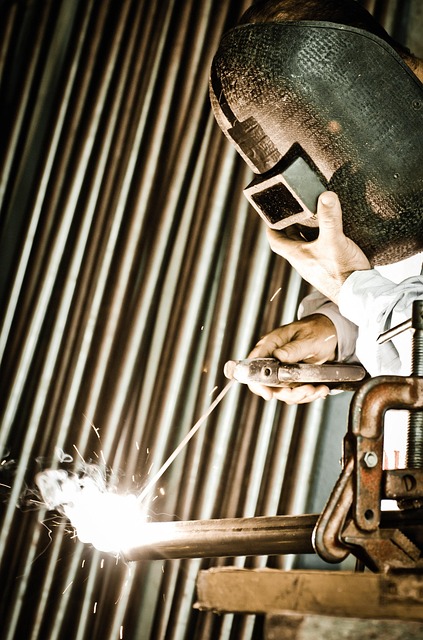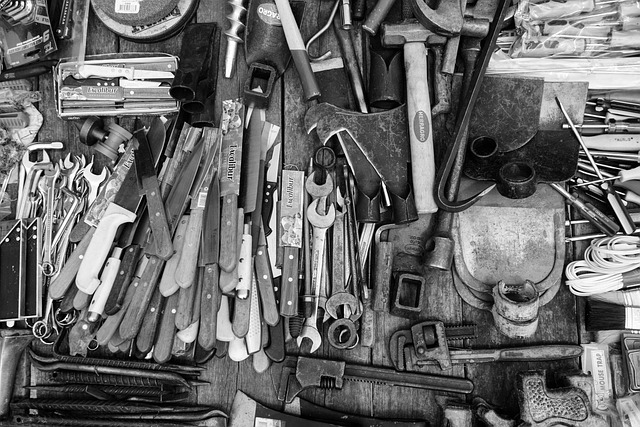Corrosion, a natural process affecting metal integrity, requires targeted strategies. Identifying types like galvanic or chemical corrosion is key, followed by regular maintenance including cleaning and protective coatings. Select rust repair methods, such as sandblasting or chemical etching, restore surfaces before applying coatings. Effective protection depends on proper surface preparation, tailored rust-proofing materials, and regular reapplication. Mistakes like skipping preparation or using unsuitable treatments weaken adhesion and require costly repairs. Case studies prove the success of corrosion protection systems across industries, with select rust repair methods repairing damage and preventing future corrosion.
Corrosion, an insidious enemy of materials and structures, can cause significant damage and costly repairs. Understanding this process is key to implementing effective corrosion protection systems. This article guides you through the essentials, from recognizing types of corrosion to selecting the best rust repair methods and maintaining long-lasting solutions. We’ll also highlight common mistakes to avoid and showcase successful real-world case studies, empowering you with knowledge for optimal corrosion prevention using select rust repair techniques.
- Understanding Corrosion: The Enemy Within
- Types of Corrosion Protection Systems
- Choosing the Right Rust Repair Method
- Application and Maintenance Tips for Longevity
- Common Mistakes to Avoid During Installation
- Case Studies: Successful Corrosion Prevention in Action
Understanding Corrosion: The Enemy Within

Corrosion is a subtle yet insidious enemy that can compromise the integrity and longevity of metal structures and equipment. It’s a natural process where certain metallic elements react with substances like water and oxygen, leading to degradation and ultimately failure. This silent destroyer can manifest in various forms, from surface discolouration to structural weakness, affecting everything from machinery and vehicles to bridges and buildings. Understanding corrosion is the first step towards effective protection, allowing us to select appropriate rust repair methods and rust proofing materials.
By identifying the specific type of corrosion, such as galvanic or chemical corrosion, professionals can implement tailored strategies. Regular rusty equipment maintenance tips, including cleaning, inspecting, and applying protective coatings, are essential in the battle against corrosion. These proactive measures ensure that metal surfaces remain intact, delaying or preventing the need for costly repairs and replacements.
Types of Corrosion Protection Systems

Corrosion protection systems are designed to safeguard various materials, particularly metal, from the detrimental effects of oxidation. The primary goal is to prevent rust formation and prolong the lifespan of structures and components. These systems encompass a diverse range of solutions tailored to specific applications. One such critical component is select rust repair methods, which involve targeted interventions to restore damaged surfaces. This can include sandblasting or chemical etching to remove corrosion before applying protective coatings.
The effectiveness of corrosion protection heavily relies on proper metal surface preparation before painting. This step involves cleaning the surface, removing any existing rust and contaminates, and ensuring a smooth base for subsequent coatings. Rust-proofing materials play a significant role in this process by creating an impenetrable barrier against moisture and other corrosive elements. These materials can be applied as paints, coatings, or sealants, offering both aesthetic improvements and robust corrosion prevention techniques.
Choosing the Right Rust Repair Method

When it comes to selecting the right rust repair method, understanding the severity of the corrosion is key. For minor rust spots on metal surfaces, a home rust removal tips approach can be effective. This may involve using sandpaper to gently scrape away the visible rust and then applying a suitable primer or paint to prevent further damage. Metal surface rust treatments, such as chemical rust converters, can also be used to neutralize the rust and provide a clean canvas for repainting.
For more extensive metal corrosion repair, professional interventions might be necessary. This could include methods like electrochemically converting rust back to iron (a process known as galvanization) or applying specialized coatings designed to ward off moisture and prevent future rust formation. These techniques are especially crucial in industries where durability and longevity of equipment are paramount, ensuring that metal structures last for years without succumbing to the effects of corrosion.
Application and Maintenance Tips for Longevity

Proper application and regular maintenance are key to ensuring the longevity of any corrosion protection system. When it comes to selecting a rust repair solution, opt for products specifically designed for your needs—whether that’s a rusty bicycle restoration, car body rust repair, or industrial-strength rust inhibitors. These specialized treatments not only address existing corrosion but also create a protective barrier against future damage.
To maximize the effectiveness of these systems, follow manufacturer instructions carefully during application and ensure surfaces are clean, dry, and free from debris. Maintenance involves periodic inspections and reapplication as needed, particularly in environments prone to high humidity or extreme temperatures. Regular care not only extends the life of your corrosion protection but also ensures that repairs remain indelible, safeguarding against further deterioration for years to come.
Common Mistakes to Avoid During Installation

During the installation of corrosion protection systems, several common mistakes can lead to ineffective protection and premature damage to metal surfaces. One of the most frequent errors is neglecting proper surface preparation. Before applying any rust repair or metal surface rust treatments, it’s crucial to thoroughly clean, degrease, and roughen the surface to ensure good adhesion of protective coatings. Ignoring this step often results in a weak bond, leaving the metal vulnerable to corrosion.
Another mistake to avoid is selecting an inappropriate protection method for specific applications. Different metals have unique requirements when it comes to rust prevention. Using home remedies for rust stain removal or quick fixes like how to stop rust naturally might offer temporary solutions but won’t provide lasting protection. Always assess the project’s needs and choose corrosion protection systems tailored to the metal type, considering environmental factors and intended use to ensure optimal performance and longevity.
Case Studies: Successful Corrosion Prevention in Action

Corrosion protection systems have been successfully implemented across various industries, with case studies showcasing remarkable results in preventing metal degradation. For instance, consider a recent project involving an old, rusted vehicle. By employing a combination of specialized coatings and barrier treatments, the restoration team was able to thoroughly remove existing rust stains using effective home remedies for rust stain removal while ensuring no new corrosion developed. This not only extended the life of the vehicle but also highlighted the power of select rust repair methods in combating metal surface rust treatments.
Another intriguing example is a bridge reconstruction where fast rust removal methods were integral to the project’s timeline. The construction team utilized cutting-edge protective coatings and anti-corrosion solutions, preventing any new rust formation during the rebuilding process. This case study demonstrates how modern corrosion protection systems can not only repair existing damage (like metal surface rust treatments) but also serve as a robust defense against future corrosion, ensuring structures remain intact and vibrant for years to come.
Corrosion protection systems are a vital investment for preserving the integrity and lifespan of structures, vehicles, and equipment. By understanding the various types available, selecting the appropriate rust repair method, and implementing consistent maintenance, individuals and organizations can effectively navigate the challenges posed by corrosion. Remember that preventing corrosion is often more cost-effective than repairing its damage, making it a key consideration in any asset management strategy. Choose the right rust repair approach based on your specific needs, and leverage case studies as valuable guides for successful corrosion prevention.
